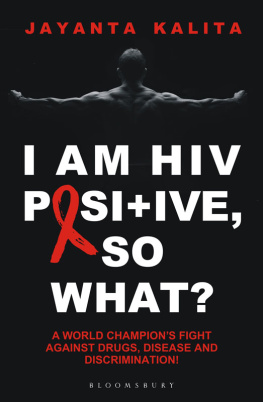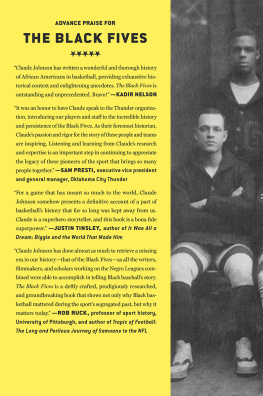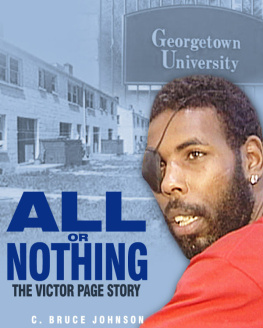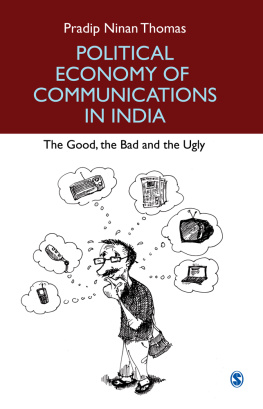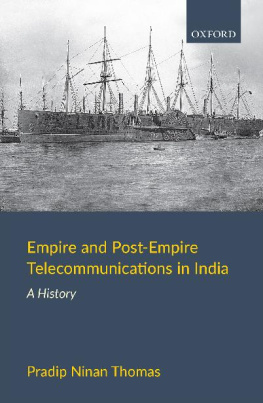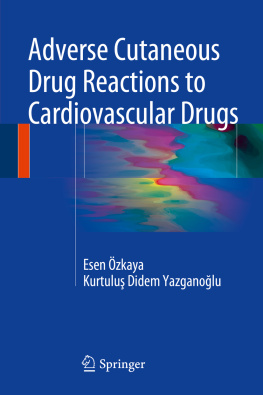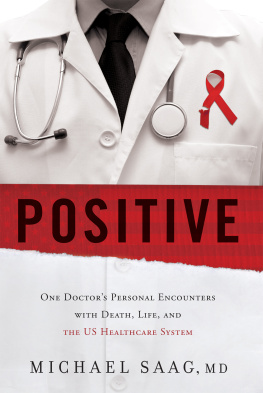Table of Contents

I am HIV Positive, So What?
A World Champions Fight Against Drugs,
Disease and Discrimination

I am HIV Positive, So What?
A World Champions Fight Against Drugs,
Disease and Discrimination
Jayanta Kalita
First published in India 2017
2017 by Jayanta Kalita
All rights reserved. No part of this publication may be reproduced or transmitted in any form or by any means, electronic or mechanical, including photocopying, recording, or any information storage or retrieval system, without prior permission in writing from the publishers.
No responsibility for loss caused to any individual or organization acting on or refraining from action as a result of the material in this publication can be accepted by Bloomsbury or the author.
The content of this book is the sole expression and opinion of its author, and not of the publisher. The publisher in no manner is liable for any opinion or views expressed by the author. While best efforts have been made in preparing this book, the publisher makes no representations or warranties of any kind and assumes no liabilities of any kind with respect to the accuracy or completeness of the content and specifically disclaims any implied warranties of merchantability or fitness of use for a particular purpose.
The publisher believes that the content of this book does not violate any existing copyright/intellectual property of others in any manner whatsoever. However, in case any source has not been duly attributed, the publisher may be notified in writing for necessary action.
BLOOMSBURY and the Diana logo are trademarks of Bloomsbury Publishing Plc
ISBN 978 93 86606 10 5
10 9 8 7 6 5 4 3 2 1
Bloomsbury Publishing India Pvt. Ltd
Second Floor, LSC Building No.4
DDA Complex, Pocket C 6 & 7, Vasant Kunj
New Delhi 110070
Created by Manipal Digital Systems
www.bloomsbury.com
To find out more about our authors and books visit www.bloomsbury.com. Here you will find extracts, author interviews, details of forthcoming events and the option to sign up for our newsletters.
In Memory of
Major Bipul Kumar Deka, Atiram Kalita,
Bimala Deka and Tarani Kanta Deka
'All is visible and all elusive, all is near and cant be touched...'
Octavio Paz
I ts an amazing coincidence that the day I finished writing this book, the Indian Government announced some key amendments to the HIV and AIDS (Prevention & Control) Bill, 2014, making discrimination against the victims a punishable offence. Violations of this law may invite a jail term of up to two years and a maximum penalty of 1 lakh. No doubt, this legislation will bring smiles on the faces of two million infected people and assure them a life of dignity.
While the Government aims to end the HIV/AIDS epidemic by 2030, it will do well to foster a new discourse by focussing on the clinical and psychological aspects of this challenge. Lets not forget that India has been coping with the HIV problem ever since the first cases had surfaced in the country in 1986. It was exactly three decades ago when a team led by renowned microbiologist, Dr Suniti Solomon, had detected the deadly human immunodeficiency virus in the blood samples of some female sex workers in the southern city of Chennai, then called Madras.
And three years later, a group of injecting drug users (IDUs) languishing in a Manipur jail tested positive too. These two trends, emerging from different geographical and cultural milieus, confronted the countrys medical scientists, health professionals and policy makers with a challenge they were perhaps never prepared for. In short, the challenge was not so much about creating a prevention strategy as it was about fighting stigma and taboo surrounding sex and drugs, the two major causes of HIV transmission.
So, at the turn of the century when a liberalised India was making efforts to get counted as an emerging superpower, it was still stuck in a medieval mindset. The word HIV seemed to generate as much paranoia among common Indians as Osama bin Ladens name might have caused to the Americans in the immediate aftermath of 9/11. Unscientific ideas and lack of health education among a vast population meant that the HIV-infected community continued to face discrimination or even social boycott.
Amid all this, India carried on with its National AIDS Control Programme. With the central government initiating a free rollout of antiretroviral medicines in 2003-04, living with HIV became physically less painful. Yet, not much changed in terms of societal attitude, which continued to inflict psychological trauma on the HIV-positive population across India. Manipur, a high-risk state because of a large population of IDUs, was no exception. Here, the problem got further complicated due to factors, including insurgency, underdevelopment and inadequate healthcare facilities.
When everything looked so dark and gloomy, an incredible story of courage and determination emerged from this tiny landlocked border state, providing a ray of hope to millions across the globe. Its the story of how an ordinary HIV-affected Manipuri displayed an extraordinary will power to challenge the virus in his body. Defying doctors advice, he took to bodybuilding, mended his health and became an international champion. What makes him unique is that soon after he lifted the Mr Manipur title, Khundrakpam Pradipkumar Singh came out in the open with his HIV-positive status and announced his career plans, an incident unparalleled among similar patients across the world.
Like a true rebel, he defied odds to realise his dream. He came out of the closet to fight stigma and discrimination. It is best to be honest with yourself and face facts. That is half the battle won. That is why I decided to disclose my HIV positive status to the media, Pradip said in an interview. He has shown to the world that HIV is manageable and a person with a positive mindset can change his/her destiny with dedication and determination.
Until 2007, Pradip was an unknown entity. When his story was picked up by the national media, it generated a lot of attention. Subsequently, four documentaries were made on his life, two of which won national awards. Besides, Pradip was part of a global project on HIV/AIDS that received critical acclaim at a number of film festivals and bagged at least a dozen awards. In a word, people in India and abroad are already aware of some key facts of his life.
So, one may wonder what else is left to be told about him? A lot more, I would say! Let me explain this in a rather crude manner. Indian media has a tendency to chase stories that border on binaries India-Pakistan, Hindu-Muslim, upper caste-Dalits, so on so forth. It prefers politics, Bollywood and cricket to human interest stories emanating from the farthest corners of Northeast, which people like Pradip belong to. He proved lucky since some national dailies brought him into the limelight but they did not bother to revisit the story later, leaving many poignant episodes of his life untold.
Against this backdrop, I decided to recreate Pradips story on a larger canvas and make it known widely. This book is an attempt to present a wide-angle view of a private life, which is interlinked with the contemporary history of Manipur. This is why the narrative may appear to meander around topics as diverse as drug trafficking, insurgency, health, sports and politics. Nevertheless, Pradips voice resonates across the chapters bridging the gap between private and public discourses about living with HIV.

